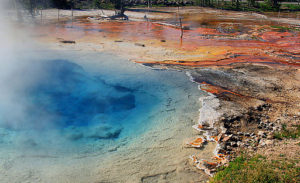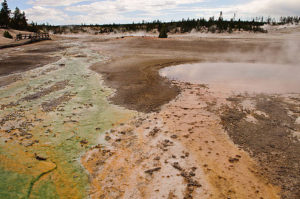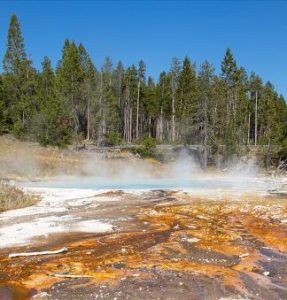Colors of Yellowstone hot springs reflect chemical reactions and heat-loving organisms.

Image: Silex Spring, Yellowstone National Park
Hot water is a better solvent than cooler water; it dissolves large amounts of silica, the major element of these volcanic rocks. Silica, in the form of sinter, lines the bottom of Silex spring. It forms terraces along the runoff channels and gives the spring its name: Silex is Latin for silica.
Image: Creative Commons, Silex Spring, Yellowstone
Runoff from Silex Spring over heated ground creates a bacterial mat.


Image: Creative Commons, Silex Spring overflow and bacterial mat
Silex Spring overflows most of the year. This overflow creates a hot environment where thermophiles, heat-loving organisms, thrive.
Thermophiles in the bacterial mat become food for several kinds of flies that live in and on the hot water. The flies then become food for mites, spiders, various insects and birds.

Image: Map showing location of Silex Spring’s bacterial mat.
Source: National Park Service website.



